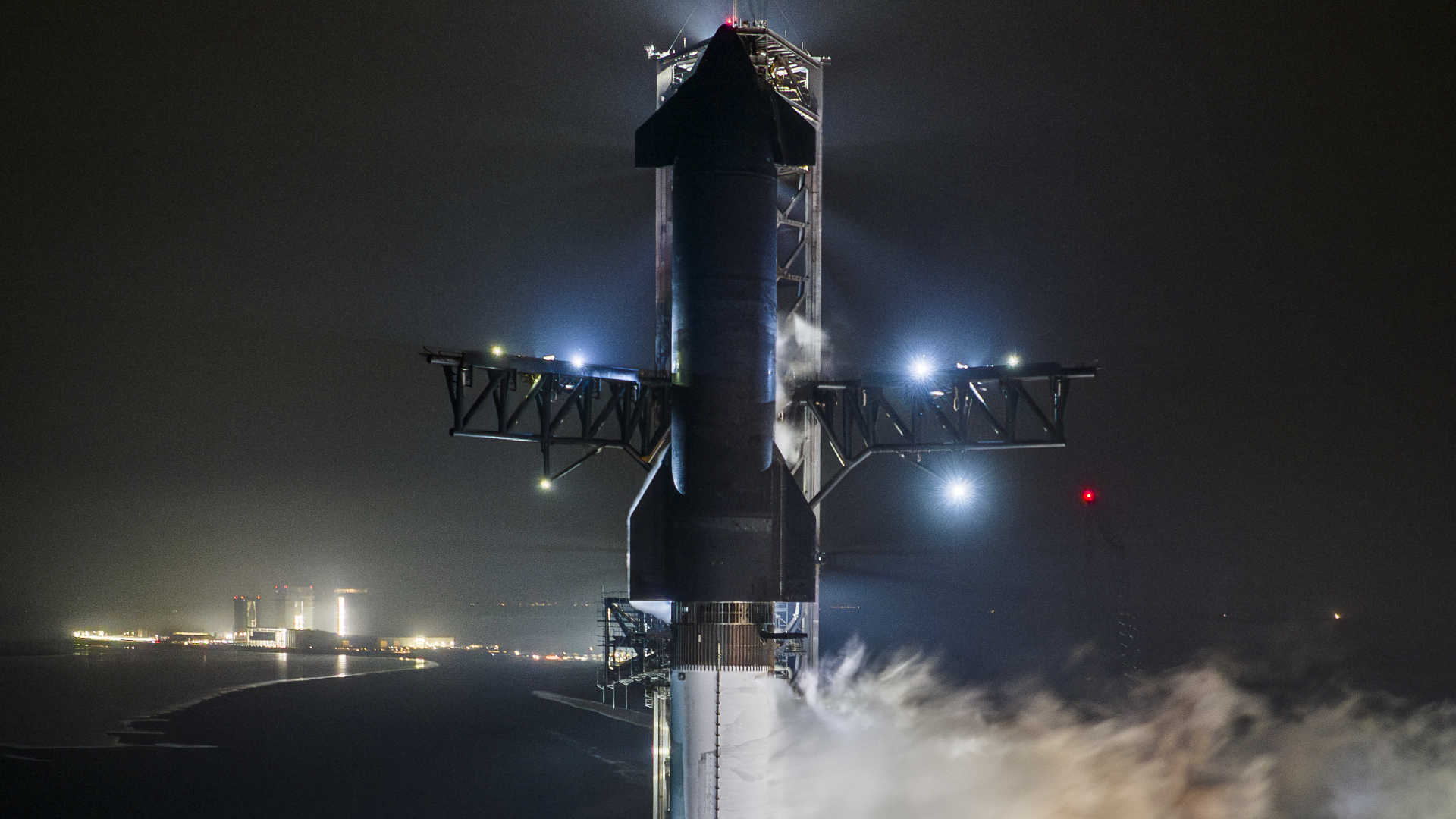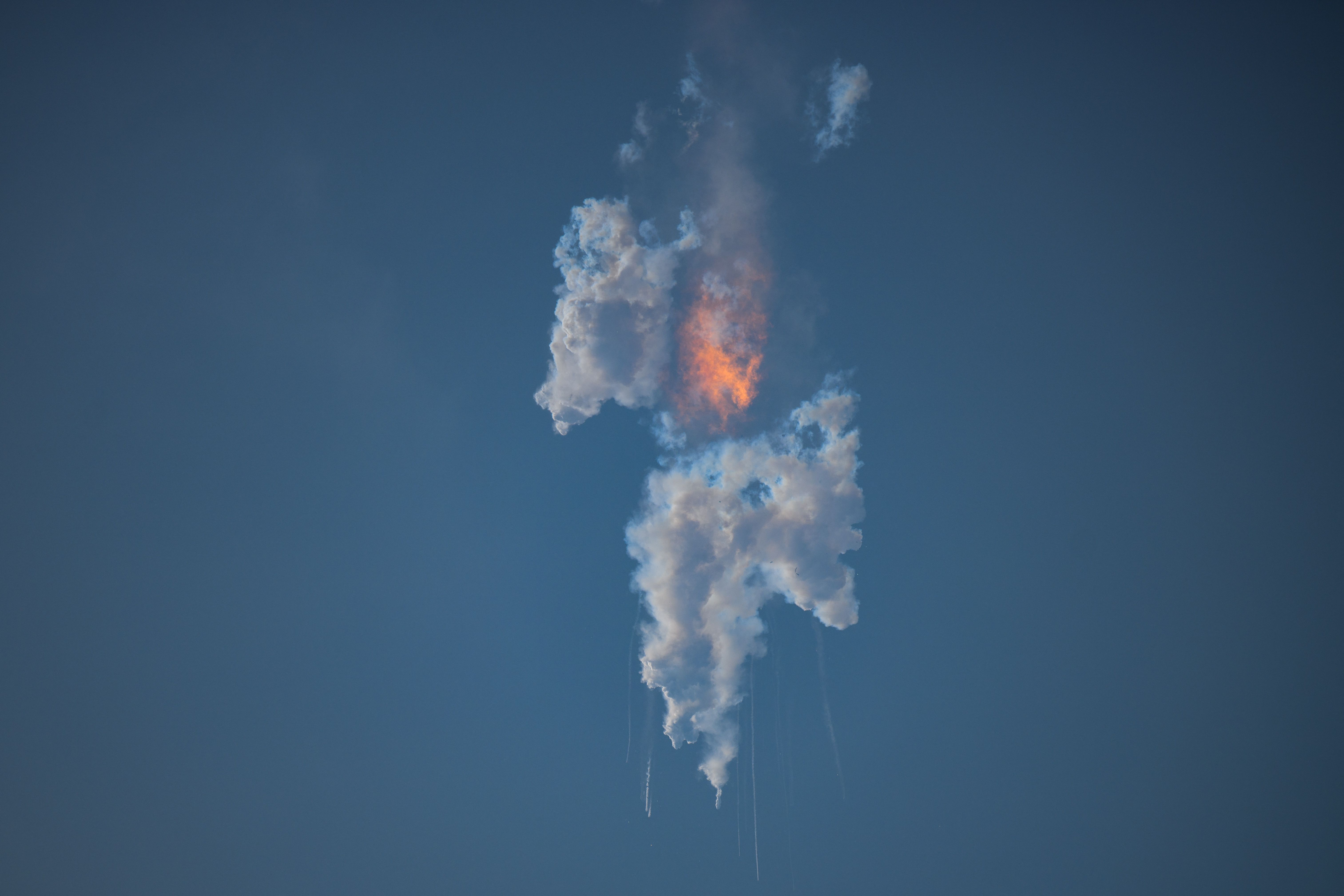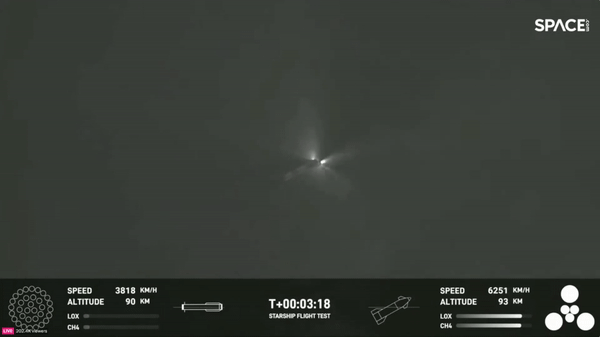
The next test flight of SpaceX's Starship rocket could come as soon as next week.
SpaceX is targeting March 14 for the third flight test of its Starship vehicle, according to a post on X (formerly Twitter) the company quietly published announcing a livestream of the launch. Starship somewhat confusingly consists of two parts: The stainless-steel reusable upper stage known also as Starship, and its Super Heavy first-stage booster. Together, the two stand over 400 feet tall (122 meters).
The company recently performed a critical fueling test on March at its Starbase facility near Boca Chica, Texas. During the test, over 10 million pounds of liquid methane and liquid oxygen were pumped into the rocket. "Starship Flight 3 preparing for launch," SpaceX CEO Elon Musk wrote in a post on X accompanying photos of the fueling test. You can watch the test here at Space.com, when the time comes, courtesy of SpaceX.
Related: SpaceX fuels up massive Starship megarocket in test for 3rd launch (photos)
Starship and Super Heavy are designed to be fully reusable. Together, they are the world's most powerful rocket and are capable of launching up to 165 tons (150 metric tons) into orbit.
NASA selected Starship to land astronauts on the moon during its upcoming Artemis 3 mission scheduled for no earlier than 2026. But Starship still has a few hurdles to clear before that can happen. For one, it needs to reach orbit first. On the rocket's first two test flights, one in April 2023 and another in November 2023, Starship failed to do so.

During the first test flight, Starship failed to separate from its first-stage booster and began tumbling. SpaceX detonated the rocket just under four minutes after liftoff.

On its second test flight, Starship separated successfully from Super Heavy around 2 minutes and 40 seconds into flight, but Super Heavy blew up shortly after in a massive aerial explosion.

Following that second test flight, the U.S. Federal Aviation Administration (FAA) identified 17 corrective actions for SpaceX to take before the next flight: 10 on Starship and seven on the Super Heavy booster.
SpaceX has completed those, according to a Feb. 26 statement, noting that the company has "implemented hardware changes on upcoming Starship vehicles to improve leak reduction, fire protection, and refined operations associated with the propellant vent to increase reliability."







